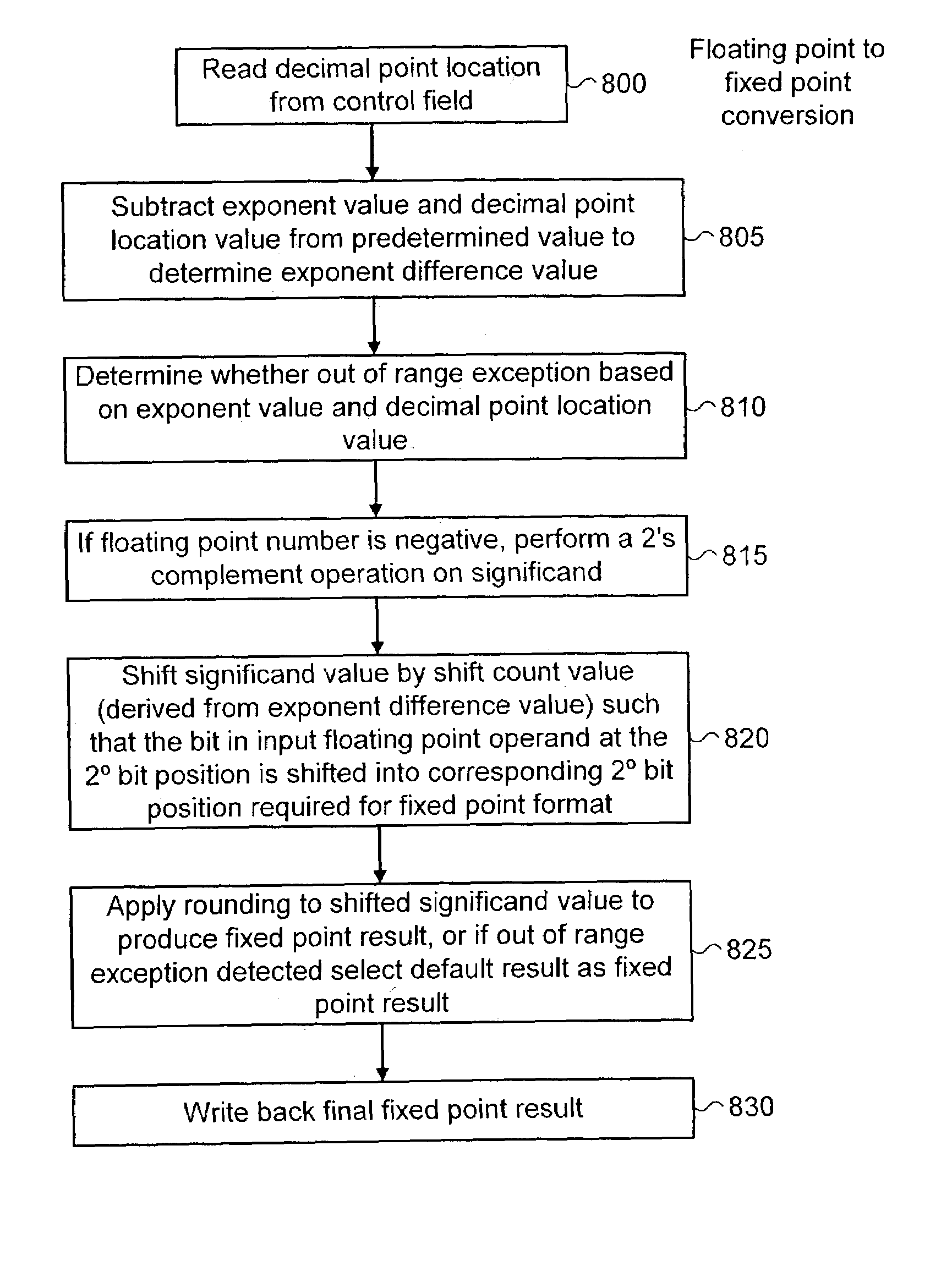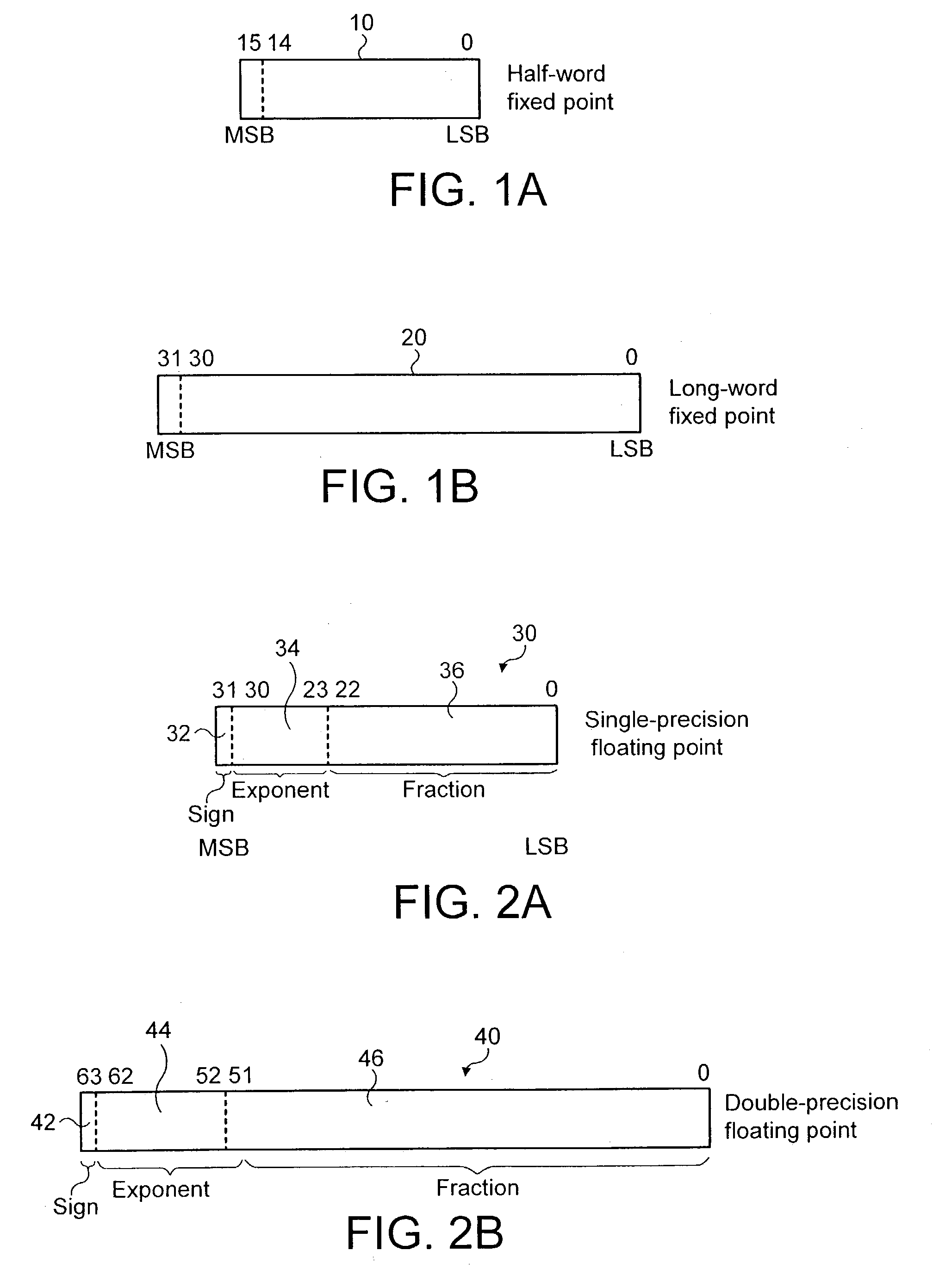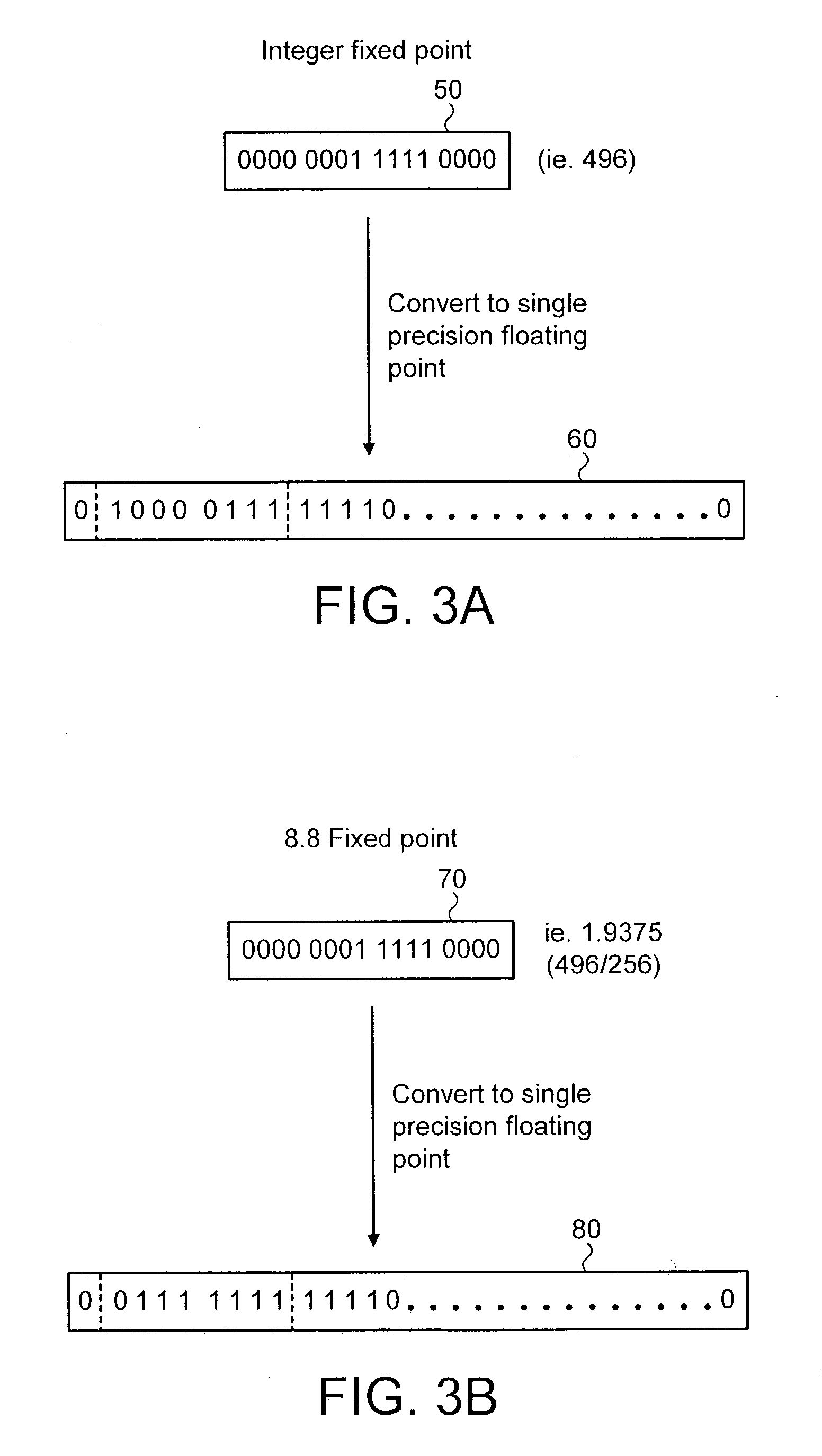Data processing apparatus and method for converting a number between fixed-point and floating-point representations
a data processing apparatus and floating-point representation technology, applied in the field of data processing apparatus and method for converting a number between fixed-point and floating-point representations, can solve the problem of not processing fixed-point numbers other than integer numbers properly for all operations, and achieve the effect of greater flexibility
- Summary
- Abstract
- Description
- Claims
- Application Information
AI Technical Summary
Benefits of technology
Problems solved by technology
Method used
Image
Examples
Embodiment Construction
[0054]As mentioned earlier, a processing unit may be arranged to execute instructions that are defined to operate upon either an integer data type or a floating-point data type. Whilst the integer processing logic within a processor will treat the operands as integer data, within the programming environment these values can be given a fixed-point interpretation with the position of the decimal point within the operands being selectable. Since the hardware is not “fixed-point aware”, then the running of fixed-point algorithms on the integer hardware of the processor requires the use of additional operations to ensure correct processing of the fixed-point values within the integer hardware, for example bit manipulation following a multiply operation, re-scaling of results, etc.
[0055]FIG. 1A is a diagram illustrating a half-word fixed-point representation of a number, i.e. a 16 bit representation. If the half-word is an unsigned half-word, then all 16 bits can be used to specify the fi...
PUM
 Login to View More
Login to View More Abstract
Description
Claims
Application Information
 Login to View More
Login to View More - R&D
- Intellectual Property
- Life Sciences
- Materials
- Tech Scout
- Unparalleled Data Quality
- Higher Quality Content
- 60% Fewer Hallucinations
Browse by: Latest US Patents, China's latest patents, Technical Efficacy Thesaurus, Application Domain, Technology Topic, Popular Technical Reports.
© 2025 PatSnap. All rights reserved.Legal|Privacy policy|Modern Slavery Act Transparency Statement|Sitemap|About US| Contact US: help@patsnap.com



